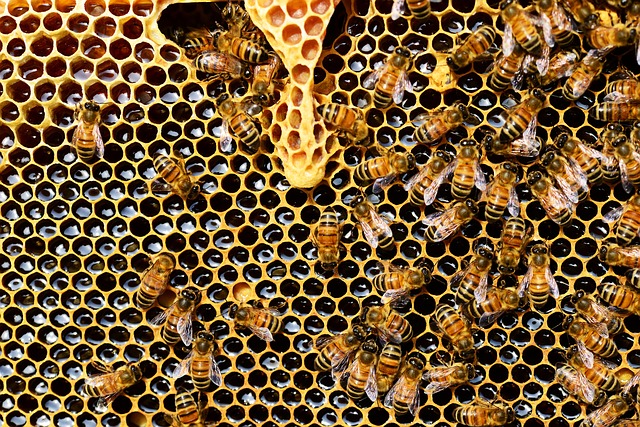Bees & Spinosad Also Used For Dog & Cat Flea Treatment
Gardening Question From Stephanie:
I hope you are well and that your new book is coming along well too. I wanted to send this directly to you, since bees & spinosad are mentioned in a variety of your posts & responses. Perhaps you know people working on the bee problem, and they can look into a possible connection with the growing use of spinosad on our pets for flea/tick treatment & prevention. I don’t have a question, per se, but I wanted to connect these dots if you hadn’t already done so too.
I don’t know what year spinosad first was used for dogs & cats (Frontline, Revolution, etc), but I started thinking that if more pet owners are using it, it may be another source affecting bees too. Even though pets are treated with the drops (or collars now too, I think), the flea/tick prevention supposedly extends to the entire yard & house. It certainly seems like use for dogs/cats might be important in the demise of bee colonies documented in the 2000s (or earlier?).
I tried looking at the wikipedia page for basic info about when spinosad was first used — I didn’t find that, but there was some other interesting info about how it was discovered in 1985 from sugarcane and seemed to be a natural and organic insecticide https://en.wikipedia.org/wiki/
It’s too bad that something that seems to solve so many problems is exacerbating others. I would like to think the chemical engineers and biochemists are continuing to work on decreasing lethal effects to bees.
Please know that the information & knowledge you share really does help us to make better decisions! It’s a tough balance to manage health for pets, people, and wildlife while reducing risks from pests like fleas/ticks (which spread intestinal worms & disease), or evens ants (but which keep termites in check). I bought diatomaceous earth awhile back, but have yet to put it out in the yard around doors/crawlspaces for the house. As I was contemplating that, I read one of your discussions of earthworm castings — I always knew the castings were good, but I didn’t know about the insecticide properties. I put a thick line of castings where the yard runs up to the house and patio/walkway areas. It seemed to dramatically reduce the huge population of earwigs I’d noticed around the house (and fewer cockroaches in the yard, too).
Thanks again for all you do!



Spinosad is the active ingredient in Comfortis, a flea-killing product that is also used for certain medical conditions in cats (like dermatitis).
My late cat was treated with Spinosad. Her behavior became odd and she was taken to a vet where I was told that they did not know why she was hiding and acting so strange and frightened.
Not long after this, she was switched to a product containing spinetoram, another flea-killing product.
Not long after this, her behavior became even more odd and she began to hide even more and was having difficulty walking and seemed to be having trouble with her eyesight. Back to the same vet she went where another $500+ was spent on blood tests that basically showed nothing.
The cat was taken to a different vet where she was x-rayed and again, nothing showed.
The cat continued to decline and could barely walk and seemed to be having difficulty seeing and was extremely frightened and would no longer eat.
She began vomiting white foam and blood and was taken back to the vet. Half of her body weight had vanished and she was obviously sick and suffering and was put down.
Cause of death: Unknown, a dx that did not sit well with me being I have two other cats in the household.
I began to do my own research. Holding an advanced degree in research, I found my answer. My poor cat died of neurtoxic paralysis! Spinosad and spinetoram kills the flea leaving it paralyzed and it dies. That is what it did to my cat.
I am distressed to learn that this highly toxic chemical that comes from Dow Chemical and Monsanto origins is not only being used on our pets, but is used as a “natural” pesticide including “organic” crops. Is it really organic if it is being treated with a chemical that not only kills fleas, but also kills bees and our best friends in life, our pets.
This is trickling down the food chain. Its use as an organic pesticide is very common and this product is easy to buy. Too easy in my opinion. I believe that this toxic chemical should be banned.
Watching my cat die for the toxicity caused by these two chemicals, spinosad and spinetoram was the most horrific thing I ever witnessed and no compensation ever offered to me for her death. Given I had over $3,000.+ in bills something would have helped.
However, the ultimate “compensation” would be to see these chemicals pulled off of the market as they are poisoning not only the plants, the bees, our pets and yes, you and me.
And we wonder why the bees and dying and animals are dying and we as humans are in no better form. How dare we be so ignorant as to wonder “why”. It is obvious don’t you think?
BOYCOTT SPINOSAD & SPINETORAM. These products are helping to kill the world!
Thank you so much for your informative comment. I knew nothing about the dangers from Spinosad. You have discovered something extraordinary. This product should not be labelled safe and organic.